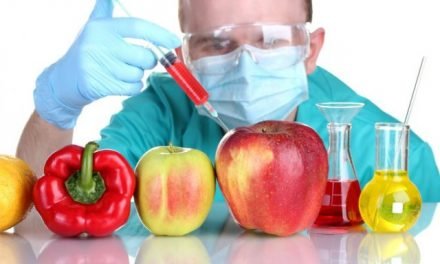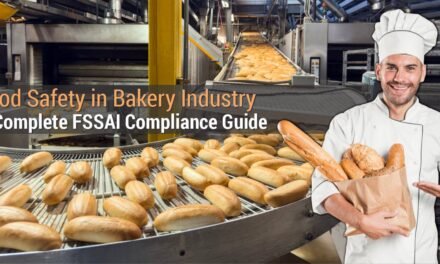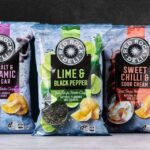Pests in food production and preparation areas pose high-risk threats, ranging from contamination to damage to materials. Infestations can lead to revenue loss, customer distrust, fines, and legal action. Anurag Mishra explains various aspects of the Pest Control Program in this first part of a two-part series.
Table of Contents
What is Pest – Any insect which destroys/attacks food, crop or livestock is considered a pest? If not controlled, then it may result in infestation of the Food / Corp during processing, transportation, and storage. In modern food processing industries, infestation is considered one of the biggest profit drains. In recent years, there have been many examples where infestations have resulted in recalls, significant sales losses, and ultimately damaged the brand image. A very recent example ( in 2018 ) of a recall due to infestation was reported in Canada, where the world-famous brand IKEA recalled its IKEA brand Marshmallow candy “GODIS PÅSKKYCKLING” because of possible contamination from a mouse infestation at the manufacturing plant.
Another example of a recall due to infestation was reported by Aytac Foods, where the organisation recalled its Aycan Risotto Rice and Aycan Brown Rice due to a possible insect infestation (weevil), which made these products unsafe to eat.
Other than the above, there are many cases where food businesses had a significant dent on their brand image due to infestation, and that’s why Pest Control is now one of the most prerequisite programs for any food processing and storage of food items.
Before pest control, we all need to understand a few facts about the pest and its behaviour. Common pests associated with food processing industries are flies, ants, rodents, cockroaches, birds, spiders, mosquitoes, geckos and stored insect pests.
Some interesting facts about these pests are:
Cockroaches – Omnivorous in nature, prefer cool and dark places, a single pair can reproduce up to 300000 cockroaches in 12 months.
Ants – Move in groups, vary is sizes.
Rodents – May enter the facility by a very tiny gap, carrying many pathogens, and are very clever.
Flies – Categorised in the fruit fly, drain fly, flesh fly, house fly, etc., breed on any decaying organic matter, and are carriers of pathogens causing Cholera, Typhoid, etc.
Geckos ( House Lizard ) – Great climbers and can contaminate food in many ways like droppings etc.
Factors leading to pest activities
Food material attracts pests due to its odour. Therefore, manufacturersand distributors of such categories must also focus on pest control. Several factors may contribute to pest activity in the facility. They are ( but not limited to ) :
Location and Structural Features of Facility:
If the facility is situated near forests, agricultural land, etc., then there are high chances of pest activities nearby, and failing any of the 4 Ds (mentioned below) may lead to pest activity inside. When selecting a location, these factors must be considered. In addition to location, a facility must also be designed in a way that minimises pest entry.
Poor Sanitation within and around the facility:
If sanitation practices are poor inside the facility (such as drain cleaning and air handling unit cleaning), it may lead to conditions that favour the growth of pests.
Incoming Materials:
Specifically, for manufacturing facilities, incoming raw, packaging, or other materials may bring some uninvited guests to the facility. Therefore, it is highly recommended to inspect these materials for any pest activity before bringing them inside the facility.
Manufacturing Equipment:
Due to design, some equipment may provide places for pests to grow, so equipment selection must be done while considering “easy to clean” factor.
Visitors and Employee:
One of the key carriers of pests inside the facilities is visitors and employees. So facilities/organisations must have clear guidelines ( like changing clothes / washing hands/cleaning shoes, etc.) for visitors and employees, and specifically those who are associated with the manufacturing lines/product storage.

If we summarize above then we can say that in any of the food manufacturing or storage facility there are 4 reasons for pest attraction :
- Water Availability
- Food Availability
- Possible shelter / harborage
- Easy access or open entry points
And to avoid the above factors there are 4 Ds which are must to avoid the pest inside the manufacturing or storage facility.
D – Deny Entry
D – Deny Food
D – Deny Shelter
D – Destroy
Pest Management Program
After pest behavior and factors attracting the pests, let us have a look of detailed Pest Management Program.
Pest Management goes hand by hand between organization manufacturing/ storing the food and the trained agency which is responsible/ Contracted for pest control.
Under the Pest Control umbrella, the organisation is responsible for cleaning and sanitation, control of entry points, habitat modification, Waste Management, and other practices such as Good Manufacturing Practice, Good Housekeeping Practice, and Good Warehousing Practice.

Cleaning and Sanitation:
The organisation must have a documented inspection, cleaning, and Sanitation Process. This process must include all areas, such as the floor, roof, and false ceiling, with defined frequencies for daily, weekly, monthly, and Annual intervals. This cleaning will rule out the possibility of pest harborage and also will remove the pest traces as well. In addition to structural areas, all equipment must also have a defined cleaning program with frequencies suggested by the OEMs orthe organisation.
Waste Management:
Waste management also plays a crucial role in pest control, as poor waste management can lead to serious pest-related issues. Waste must be placed in the designated area in the correct manner (covered, not accessible, etc.), which minimises the risk tofood items. Waste must be disposed of at a quick frequency to avoid decay and infestation.
Control on the Entry Points:
Controlling the entry of pests is one of the most critical aspects of Pest Management. All doors that open directly to the exterior environment must be covered to seal each small gap or hole. In manufacturing facilities, windows must be covered/appropriately screened. In warehouses, auto doors are highly recommended, accompanied by air curtains. This will minimise the possibility of pest entry while loading and unloading the materials. Other than warehouse doors, all the emergency doors must be packed from all sides (by a rubber strip). The main entry door must have a double door entry so that the chances of pest entry can be minimised.

Habitat Corrections:
By correcting the habitat, we can reduce the pest activities. One of the major facts is that hidden/ inaccessible places like the roof or false ceilings. These are the places where most pests thrive, so by proofing and modifying these areas, we can eliminate areas where pests grow. Other corrections include Lighting. Lighting attracts most flying pests, and by using the correct type of lights, we can reduce their numbers. If we replace regular lights with LED or sodium lights, then attraction can be reduced by significant levels. Vegetation in exterior areas may also serve as a pest carrier to the facilities, so all vegetation in the external areas must be removed frequently.
Correction in Other Practices:
Corrections in Other Practices like Good Manufacturing Practices, Good Housekeeping Practices, Good Logistics Practices and Good Warehousing Practices, etc, may reduce the pests up to the maximum. A few of them includes :
A ) Incoming Material Inspection:
All materials ( Raw/Pack/Equipment/Others) must be inspected thoroughly before being taken into the facility. Each consignment must be checked for any pest-related activities( like a live pest, evidence like excreta or feathers, etc.). In case of any shred of evidence, the consignment must be rejected.
B) Good Warehousing Practices:
All stocks must be kept at least 18 inches away from the wall to facilitate easy inspection and prevent pests from coming into contact. It is always recommended to have plastic pallets in the manufacturing area. If wooden pallets are used, they must be regularly cleaned and treated to prevent pest activity. Additionally, unused pallets should not be stored in open areas, as this can allow pests from outside to enter the building.
C) Good Housekeeping Practices:
Other than cleaning and sanitation, removal of used RM/PM bags, scraps, and other unwanted materials also plays an important role in minimizing the pest activities.
D ) Good Logistics Practices:
As mentioned above, material movement also plays a crucial role in pest control. For this,, it’s recommended that the organisation must have dedicated vehicles for raw material movements, and if not possible, then the vehicle must be cleaned and inspected before loading. Additionally, it must be ensured that the vehicle is dedicated solely to the transportation of food items (excluding non-food items, etc.). Additionally, the Vehicle must be treated for pest control at regular intervals (once a month is recommended).
ALSO READ:

















